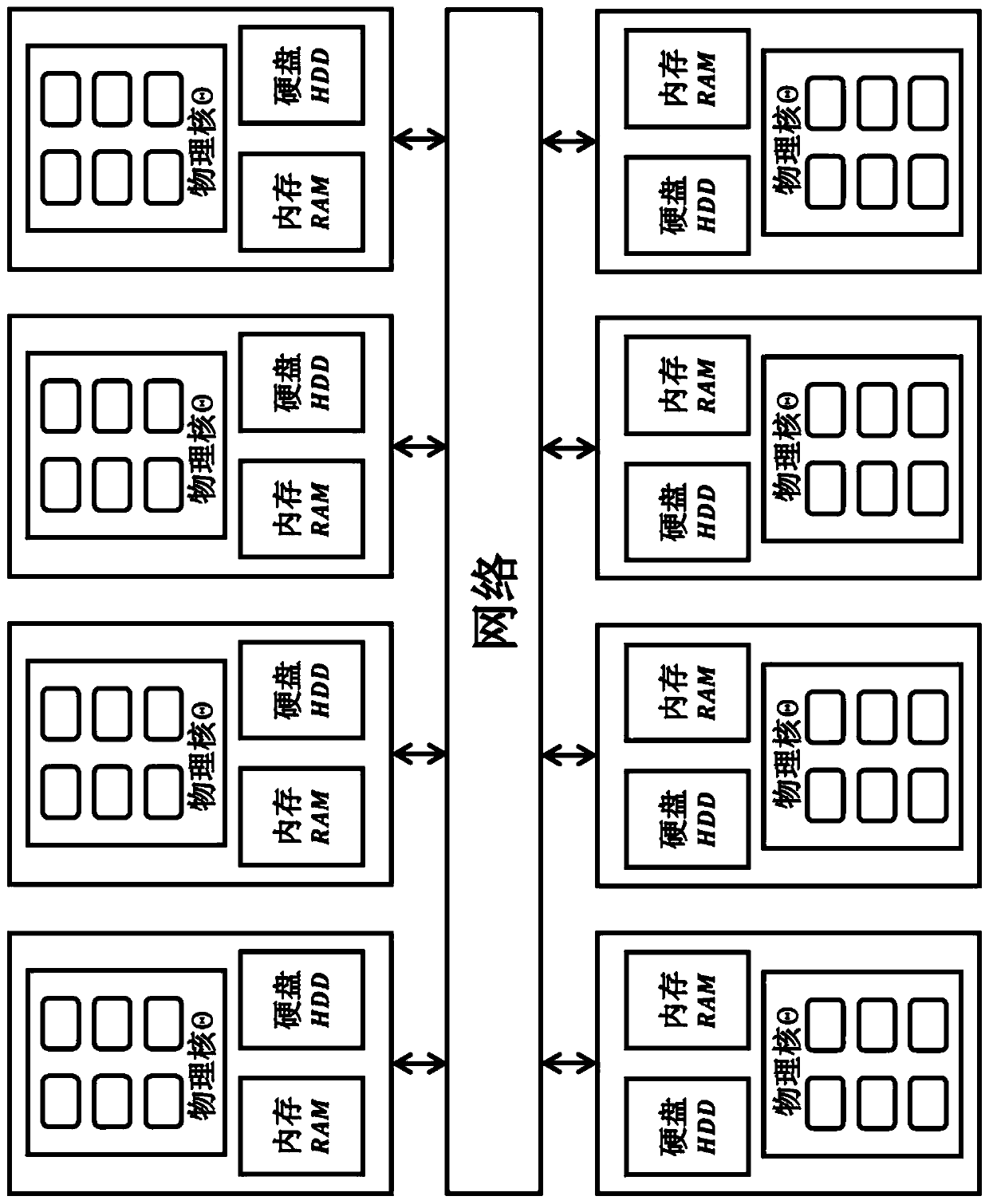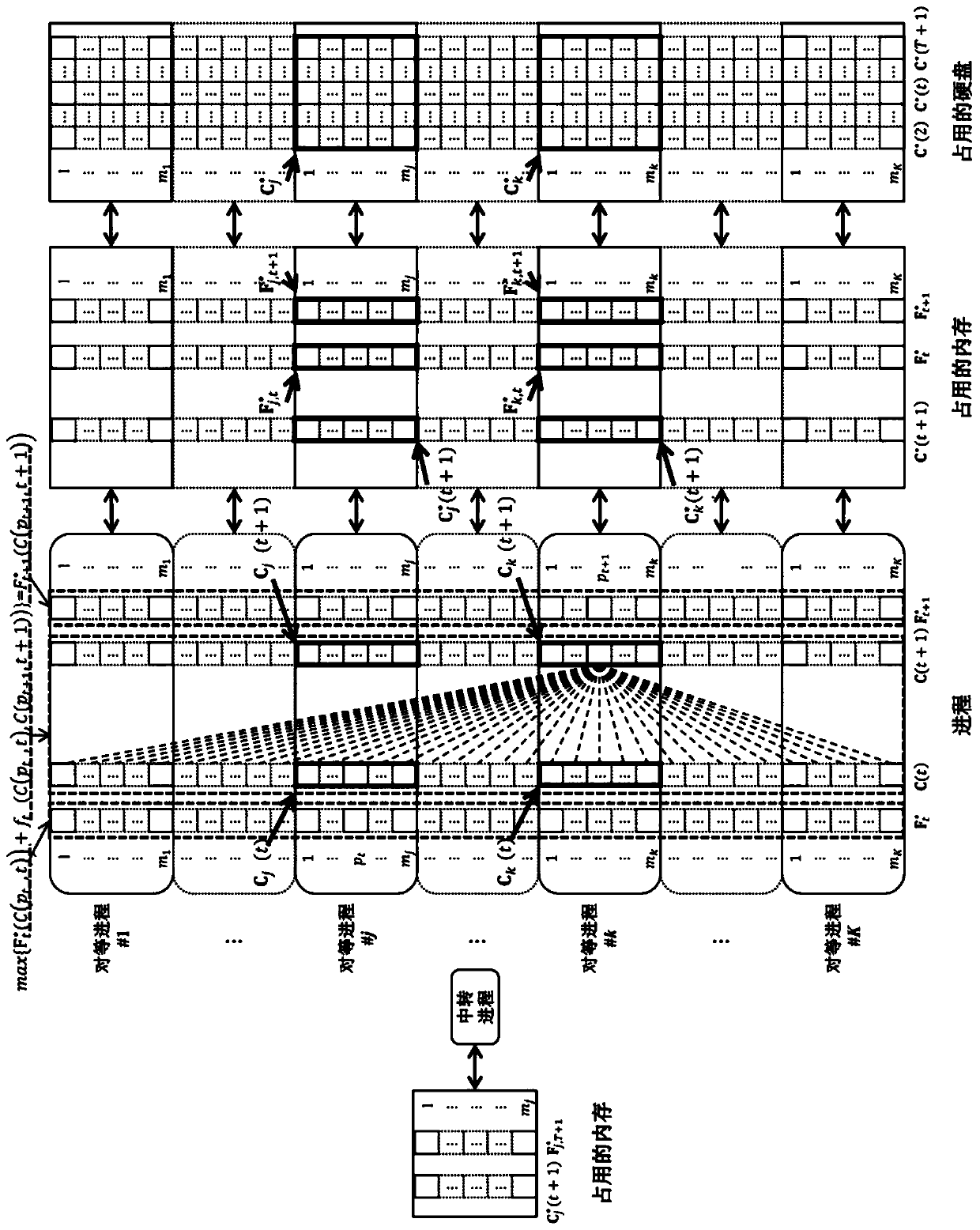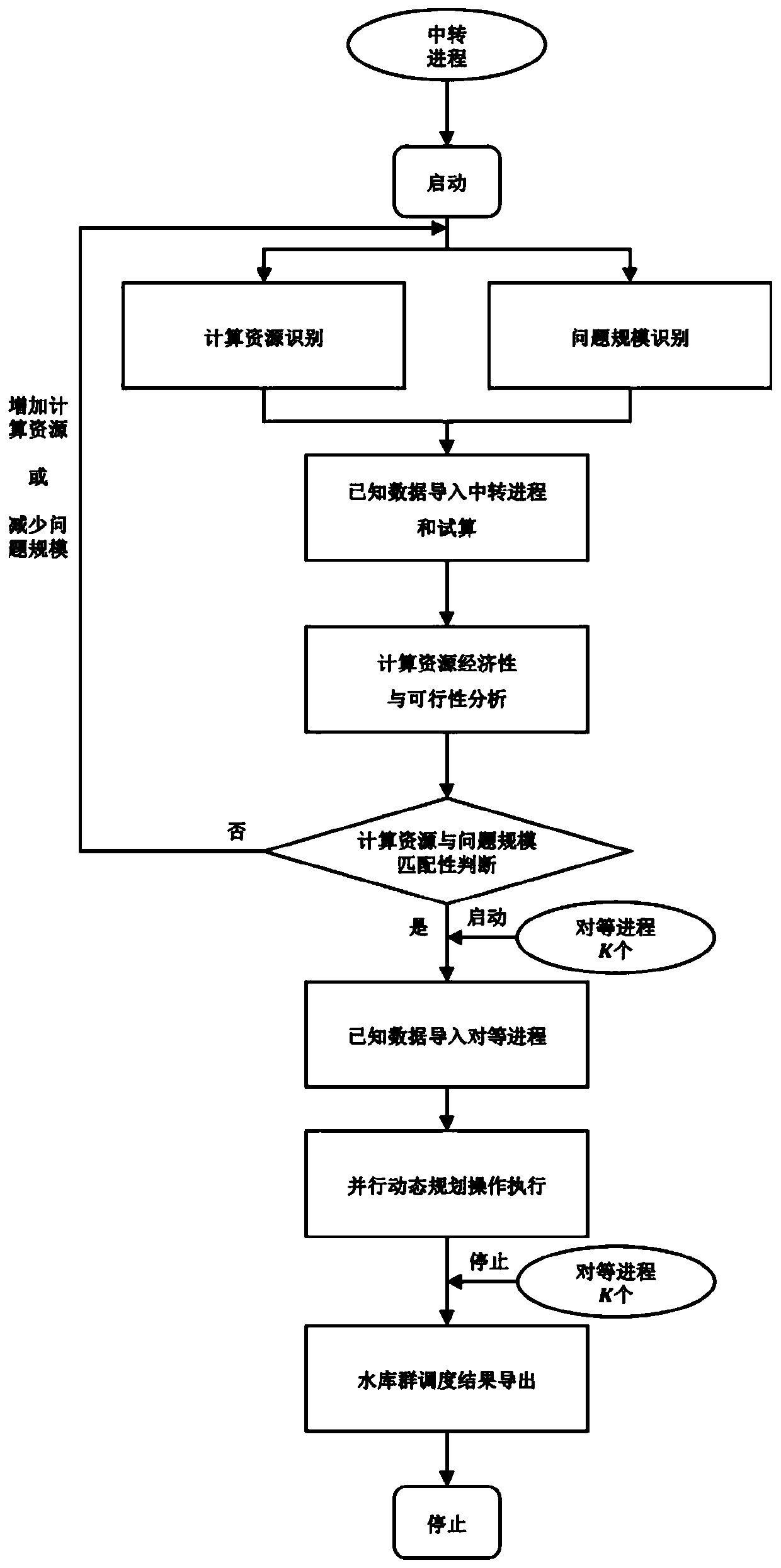Economically Feasible Parallel Dynamic Programming Method for Reservoir Group Scheduling Considering Computational Resources
A computing resource, dynamic programming technology, applied in computing, complex mathematical operations, other database retrieval and other directions, can solve problems such as reducing the computing time of DP method
- Summary
- Abstract
- Description
- Claims
- Application Information
AI Technical Summary
Problems solved by technology
Method used
Image
Examples
Embodiment 1
[0073] This embodiment is a parallel dynamic programming method for reservoir group dispatching that considers computing resources to be economically feasible. The distributed storage parallel computing system used in the method includes: a plurality of computing units connected through a network, and the computing units are set There are multiple physical cores, memory and hard disks, such as figure 1 shown.
[0074] Considering the huge amount of calculation, hundreds or even thousands of processing units are needed in the method described in this implementation to form a distributed storage and parallel computing environment. In order to reduce the footprint of the hardware system, when a large number of processing units are required, hundreds or even thousands of blade servers can be used as processing units and connected together through the network, see figure 1 .
[0075] In a distributed storage parallel computing environment, each processing unit exchanges informati...
Embodiment 2
[0148] This embodiment is an improvement of the first embodiment, and is a refinement of the steps of the first embodiment regarding the calculation resource economy and feasibility analysis. Clock time τ in the steps of computing resource economy and feasibility analysis described in this embodiment K :
[0149] τ K =(τ'+τ"+τ"') / K,
[0150] Where: τ K is the clock time calculated using K peer processes, including the calculation fragment time τ′, τ′=m 2n ×Δτ×T, communication fragmentation time τ″, load unbalanced time loss τ″′;
[0151] Memory RAM under the jurisdiction of a single peer process K :
[0152] RAM k =(m n ×3×Φ) / K,
[0153] In the formula: Φ is the storage space occupied by variables that do not distinguish variable types;
[0154] HDD under the jurisdiction of a single peer process K :
[0155] HDD K =(m n ×T×Φ) / K.
Embodiment 3
[0157] This embodiment is an improvement of the first embodiment, and is a refinement of the steps of the first embodiment related to the execution of the parallel dynamic programming operation. The sub-steps included in the steps performed by the parallel dynamic programming operation described in this embodiment are as follows:
[0158] The parallel dynamic programming operation includes two processes, the first process and the second process:
[0159] The first process, the process is as follows Figure 4 Shown:
[0160] (1) Based on the principle of equal division, allocate computing memory and hard disk space for K peer-to-peer processes.
[0161] This step is a key step to realize distributed memory and hard disk fragmentation and dynamic access. All memory and hard disk space can be rationally utilized through allocation to make them fully functional.
[0162] (2) When t=1, use k to represent any peer-to-peer process, according to F 1 * (·)=0 and C(p 1 ,1), initia...
PUM
 Login to View More
Login to View More Abstract
Description
Claims
Application Information
 Login to View More
Login to View More - R&D
- Intellectual Property
- Life Sciences
- Materials
- Tech Scout
- Unparalleled Data Quality
- Higher Quality Content
- 60% Fewer Hallucinations
Browse by: Latest US Patents, China's latest patents, Technical Efficacy Thesaurus, Application Domain, Technology Topic, Popular Technical Reports.
© 2025 PatSnap. All rights reserved.Legal|Privacy policy|Modern Slavery Act Transparency Statement|Sitemap|About US| Contact US: help@patsnap.com



